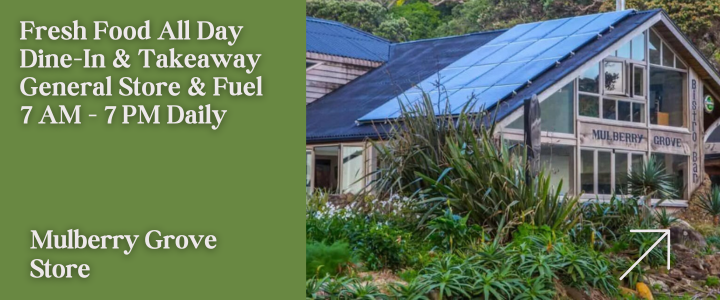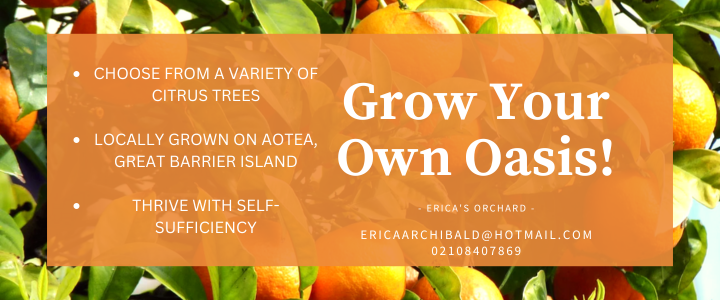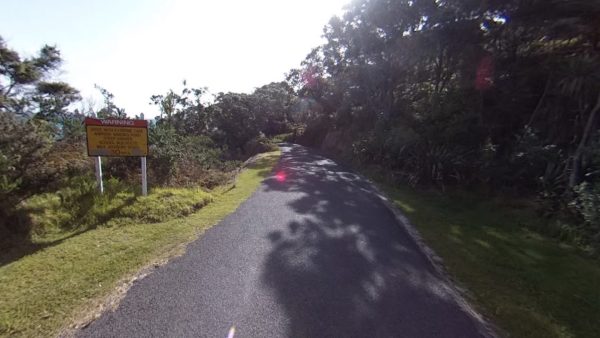As residents of our unique community, we are fortunate to have the opportunity to grow our own fruits, vegetables, and even explore the wilds for rongoā Māori herbal extracts.
Above: With their vigorous growth and ability to tolerate sandy soil, passionfruits grow great on Aotea. Photo / Paul Munhoven / CC
The barrier is a haven for those seeking a sustainable and self-sufficient lifestyle.
As residents of our unique community, we are fortunate to have the opportunity to grow our own fruits, vegetables, and even explore the wilds for rongoā Māori herbal extracts.
However, cultivating a thriving garden on Aotea comes with its own set of challenges due to the lack of topsoil and the island’s wild microclimate.
With a little perseverance and creative strategies, you can cultivate thriving gardens that nourish both body and soul.
Below we’ll explore the diverse array of fruits and vegetables suited for Aotea, along with planting tips, seasonal considerations, and solutions to overcome the challenges that arise.
Types of Fruits and Vegetables which work on Aotea.
Fruits:
Citrus fruits (lemons, oranges, mandarins): Citrus trees are resilient and can adapt well to Aotea’s soil conditions. Plant them in sunny spots with well-drained soil.
Feijoas: These subtropical fruits grow exceptionally well on Aotea and are a popular choice among gardeners.
Passionfruit: With their vigorous growth and ability to tolerate sandy soil, passionfruit vines can be a delightful addition to your garden.
Varying success with apples, pears, apricots, plums, kiwifruit, guavas, peaches, persimmons, quinces and avocados have been reported across the island, but as you’ll find out below, consider your soil, and climate first.
Above: Okiwi Passion sells seedlings and has had success growing exotic fruits and vegetables in the centre of the motu. Photo / Supplied
Vegetables:
Leafy greens (spinach, lettuce, kale): These resilient greens can thrive in Aotea’s conditions, especially during the milder seasons. Start planting in early spring or early autumn for optimal results.
Root vegetables (carrots, kūmara, radishes, potatoes, beetroot): Select varieties that have shorter maturation times to ensure a successful harvest within Aotea’s growing season. Plant them in early spring or early autumn.
Herbs (parsley, thyme, rosemary): Herbs can be grown in containers or small patches, and their aromatic flavors can enhance your culinary endeavors. Plant them during spring or early summer.
Challenges
The adage ‘Nothing fruitful comes without effort and perseverance’ sums up life on Aotea.
Let’s address the challenges and solutions to help you overcome them:
Lack of Topsoil:
Aotea’s sandy soils, with pockets of clay and loam, often lack essential nutrients and organic matter. To improve the soil quality try:
A veteran Aotea gardener tells us before the convenience (to him laziness) of Countdown deliveries it was commonplace to see locals out on the beach collecting seaweed following a big storm front. Seaweed is an excellent addition to garden soil and compost piles because of its rich nutrient content, particularly iodine, magnesium, potassium, and nitrogen, as well as its ability to improve soil texture and water retention. Before using seaweed as mulch, it’s often recommended to rinse it first to remove excess salt.
Mulching with organic materials like straw, wood chips, or leaves also helps retain moisture, suppress weeds, and enhance soil health.
Composting kitchen scraps, green waste, and organic matter creates nutrient-rich compost that can be incorporated into the soil, gradually improving its fertility.
Wet Winters and Waterlogging:
Aotea’s wet winters can lead to waterlogged soil, particularly in poorly drained areas. To overcome this, consider raised bed gardening, filling the beds with well-draining soil or compost to ensure proper drainage.
Kūmara, kimchi, cashew cream and leafy greens. Photo / Moira Clunie / CC
Grow what, where?
Aotea’s diverse microclimates offer opportunities to cultivate a range of fruits and vegetables. Let’s discover what thrives in different areas of the island:
Sunny and Exposed East Coast:
The sunny and well-drained areas of the east coast are ideal for a variety of fruits and vegetables. Consider these options:
Not to sound like a broken record, but again… Citrus fruits, such as lemons, oranges, and mandarins, are as above, resilient and can adapt well to Aotea’s soil conditions. Feijoas, with their unique flavor and adaptability, are another popular choice. Passionfruit vines, with their vigorous growth and sandy soil tolerance, can bring a touch of tropical delight to your garden.
Vegetables: Leafy greens, including spinach, lettuce, and kale, flourish in the milder seasons of Aotea. Start planting them in early spring or early autumn for optimal results. Root vegetables like carrots, kūmara, radishes, and beetroot or potatoes can also be grown, with varieties that have shorter maturation times ensuring a successful harvest within the island’s growing season. Herbs such as parsley, thyme, and rosemary can be grown in containers or small patches, adding aromatic flavors to your culinary creations. Plant them during spring or early summer.
Less Sunny but Sheltered West Coast:
The west coast, with its less sunny yet more sheltered conditions, offers opportunities for specific fruits and vegetables that can tolerate partial shade. Consider these options:
Fruits: Hardy fruit trees like apples, pears, and plums can tolerate slightly shadier conditions. Plant them during the warmer months to give them the best chance of establishing strong root systems.
Vegetables: While the west coast receives less sun, you can still grow leafy greens, root vegetables, and herbs that have some tolerance for partial shade. Start planting them in early spring or early autumn for optimal results.
Harakeke (flax) can be used as rongoā to fight infection. Their tough, sword-shaped leaves were traditionally woven into kete (baskets), sails, tukutuku panels and fishing nets. Photo / KazzaMiller / CC
Rongoā Māori Herbal Extracts
Aotea’s wild landscapes offer an abundance of native plants that can be used for rongoā Māori herbal extracts. Two notable plants are Kawakawa and Harakeke:
- Kawakawa: Recognizable by its heart-shaped, bright green leaves with a crinkled appearance, Kawakawa emits a distinct aromatic scent when crushed. Look for young Kawakawa plants in partially shaded areas with moist soil. Propagate them from seeds or take cuttings from established plants. Maintain regular watering and protect them from harsh winds until they become established.
- Harakeke (Flax): Harakeke, with its long, sword-like leaves arranged in a fan-like pattern, is a common native plant on Aotea. It can be propagated from rhizomes or root divisions. Plant them in well-drained soil and provide regular watering. Harvest the leaves and flax fibers when they reach maturity, typically after a few years.
To sum up
Cultivating a garden on Aotea is a fulfilling endeavor that connects us with the land and provides an opportunity to embrace nature’s bounty.
By understanding the specific environmental conditions, planting suitable fruits and vegetables, and implementing strategies to overcome challenges such as lack of topsoil and waterlogging, we can create thriving gardens that sustain and nourish.
Don’t forget to explore rongoā Māori herbal extracts, such as Kawakawa and Harakeke, and embrace the wisdom of tangata whenua.
With enthusiasm, determination, and a touch of creativity, you can unlock the full potential of gardening on Aotea, cultivating a vibrant oasis amidst nature’s paradise.









